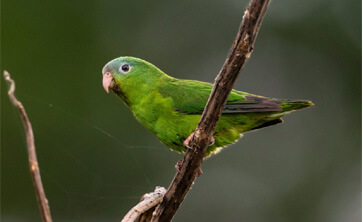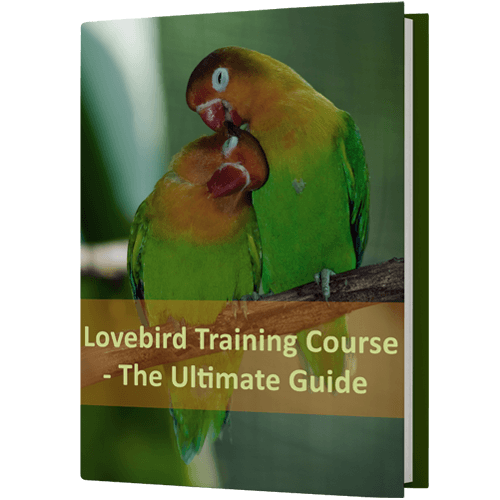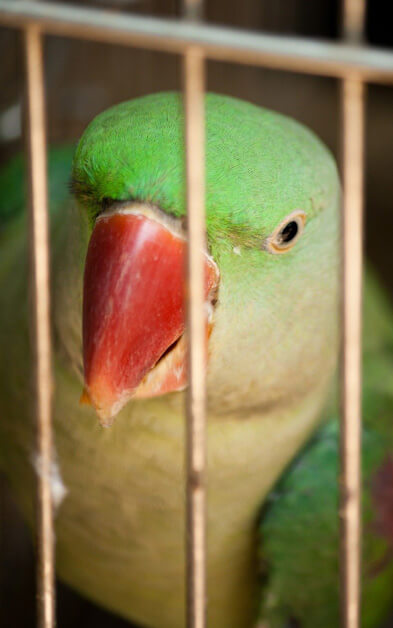Selecting The Right Cage & Accessories
Did you just adopt a new Lovebird into your family? Or maybe you already have a Lovebird but want to buy a better cage and accessories for him? Do you know what types of toys and perches should be in your Lovebirds cage?

Do you make these common mistakes?
The most common mistake that Lovebird owners make when buying their Lovebird a cage, is to buy one that is too small! At a minimum, Lovebirds need to have enough room in the cage to spread their wings out, flap them and turn around on their perch without neither their wings nor their tail touching the bars of the cage.
The general rule of thumb when selecting a cage for your Lovebird is to always buy the biggest cage that you can afford!
Sounds simple, right? Well it is!

Did you choose your Lovebird's cage with care?
Did you know that when choosing a cage for your Lovebird, a longer cage is much better than a cage that is tall and narrow? Most Lovebird’s like to fly from one side of their cage to the other side. But don’t forget that for taller Lovebirds or Lovebirds with very long tails, such as macaws, the cage height must be adequate for them as well.
Never buy a round cage for a Lovebird! This will lead to a very nervous Lovebird indeed! Lovebird’s need to have a sense of security and in a round cage there are no walls or corners for your Lovebird to hide against when he feels anxious.
Another tip to remember when choosing a cage for your Lovebird is to make sure that the cage is not painted, as most Lovebird’s will eat away at the paint. If the paint is toxic, your Lovebird can get sick or even die!

